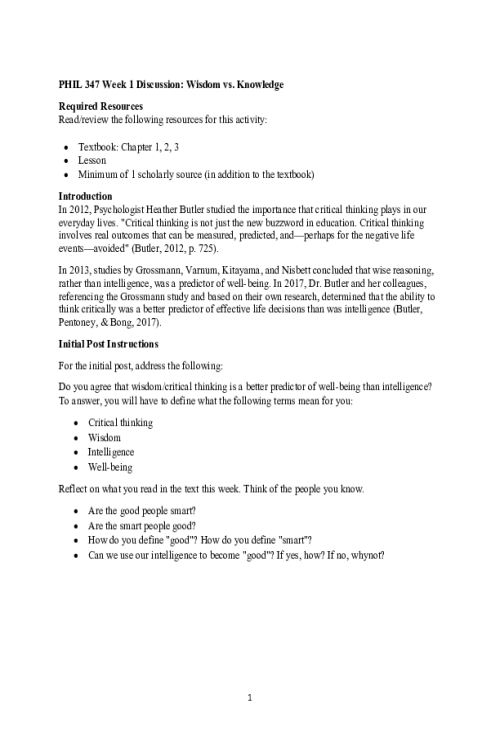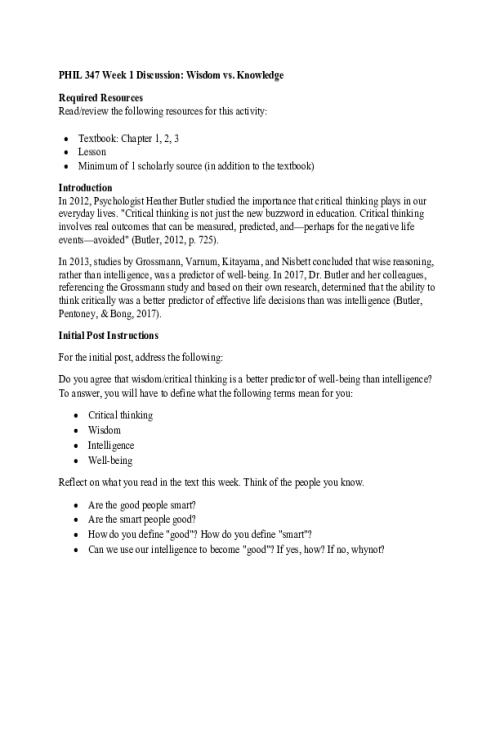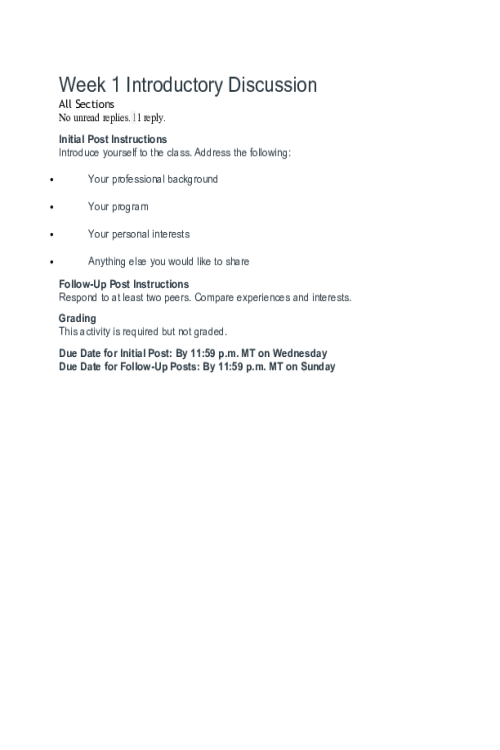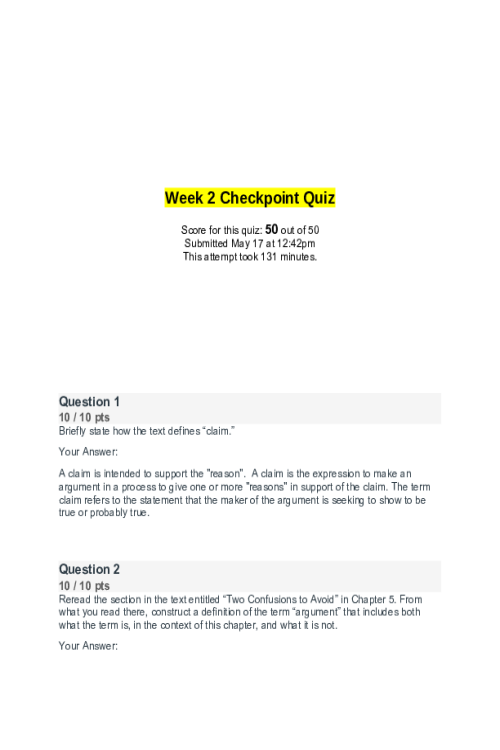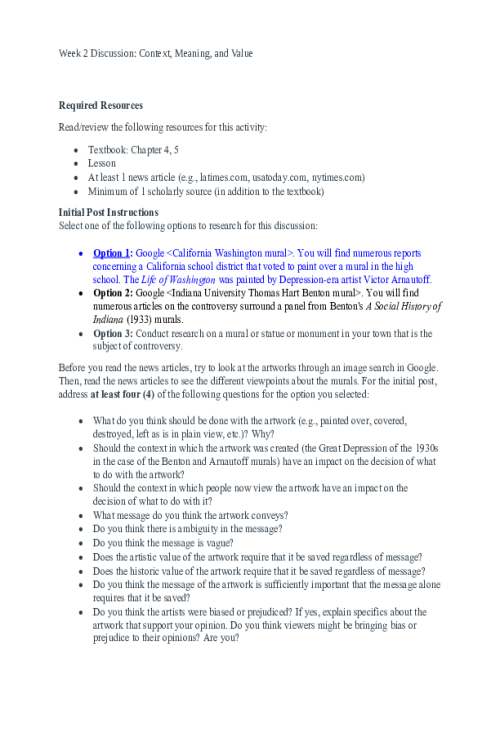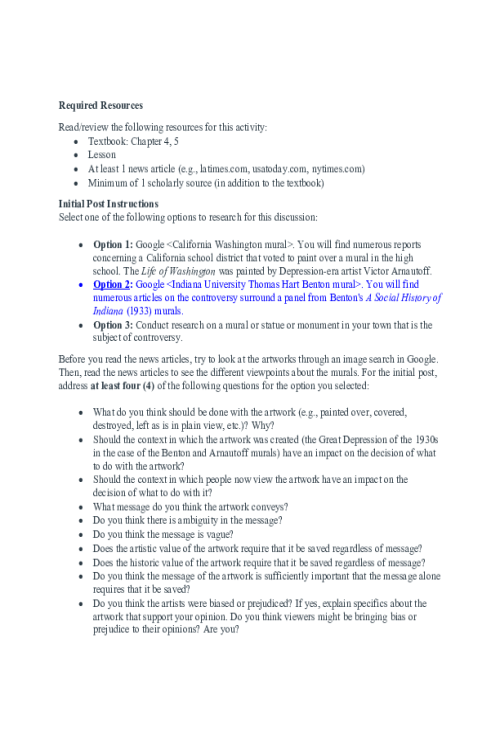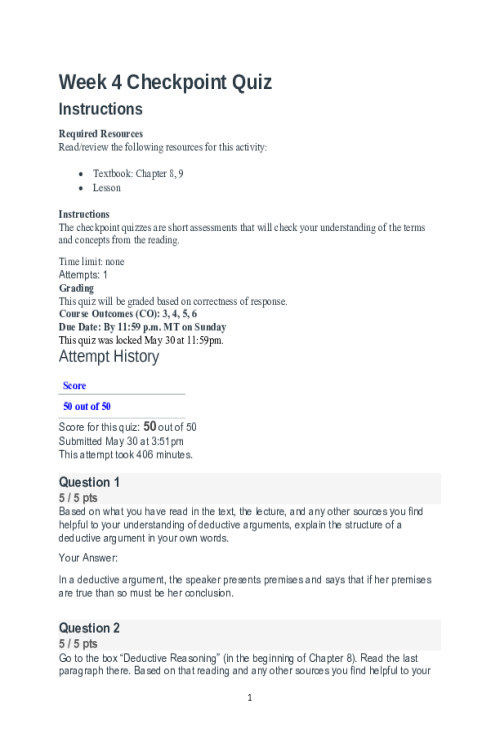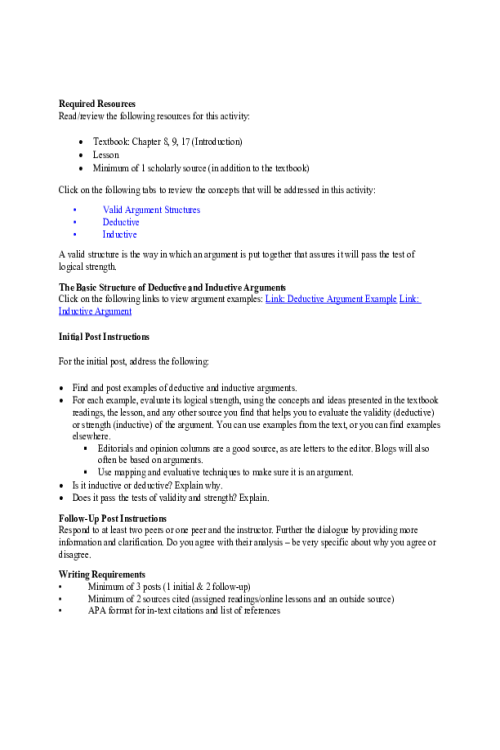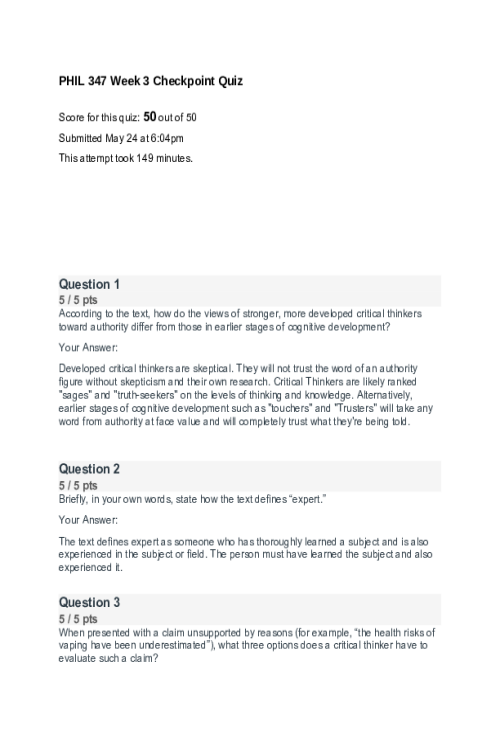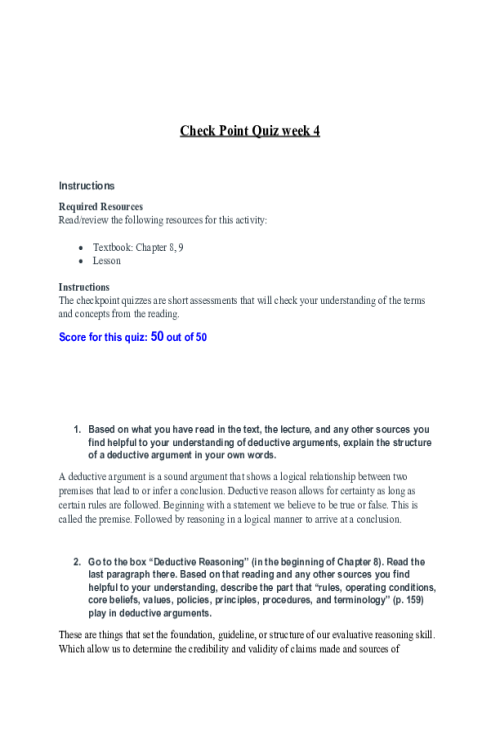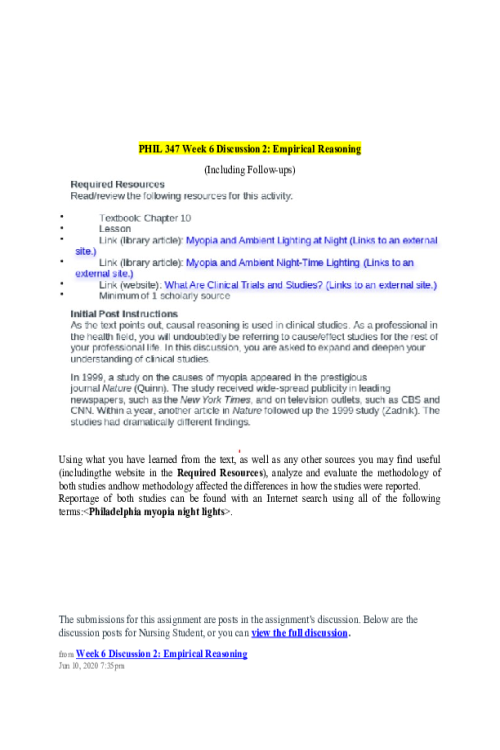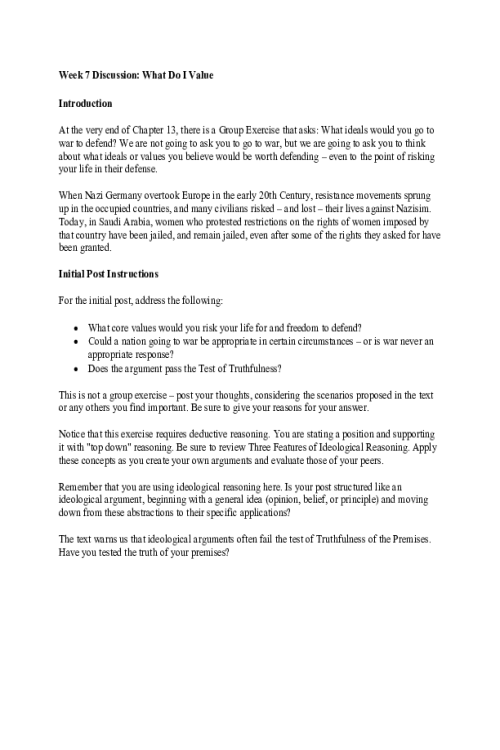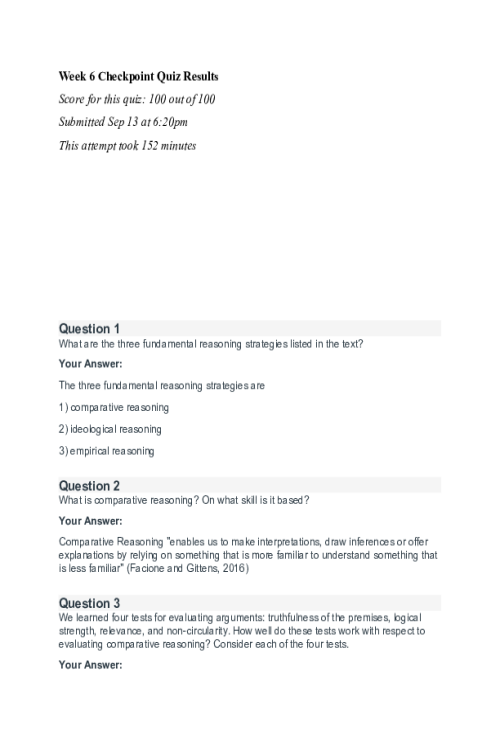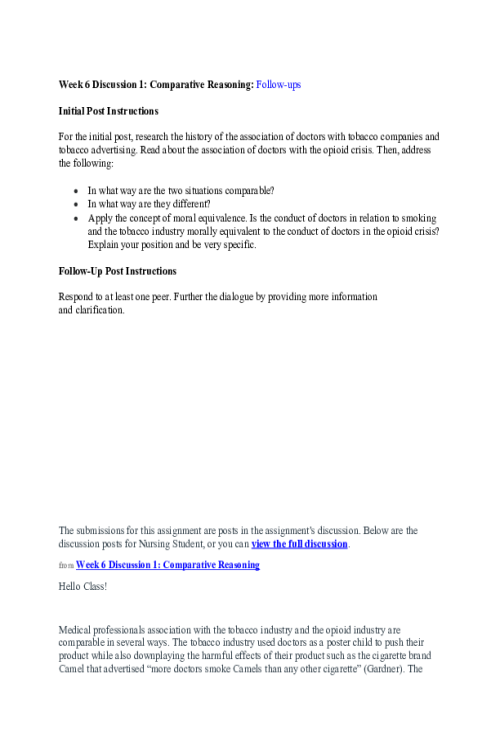PHIL 347 Week 4 Discussion including Responses; Distinguishing Inductive and Deductive Reasoning
Week 4 Discussion: Distinguishing Inductive and Deductive Reasoning (Including Follow-ups) The Basic Structure of Deductive and Inductive ArgumentsClick on the following links to view argument examples: Link: Deductive Argument Example Link: Inductive ArgumentInitial Post Instructions For the initial post, address the following: Find and post examples of deductive and inductive arguments. For each example, evaluate its logical strength, using the concepts and ideas presented in the textbook readings, the lesson, and any other source you find that helps you to evaluate the validity (deductive) or strength (inductive) of the argument. You can use examples from the text, or you can find examples elsewhere. Editorials and opinion columns are a good source, as are letters to the editor. Blogs will also often be based on arguments. Use mapping and evaluative techniques to make sure it is an argument. Is it inductive or deductive? Explain why. Does it pass the tests of validity and strength? Explain. Follow-Up Post InstructionsRespond to at least two peers or one peer and the instructor. Further the dialogue by providing more information and clarification. Do you agree with their analysis – be very specific about why you agree or disagree. Writing Requirements Minimum of 3 posts (1 initial & 2 follow-up) Minimum of 2 sources cited (assigned readings/online lessons and an outside source) APA format for in-text citations and list of references Hello Class & Professor, With deductive reasoning, the conclusion is necessarily true if the premises are true (Facione & Gittens, 2016). With inductive reasoning, the conclusion might be true, and it has some support, but it may nonetheless be false (Facione & Gittens, 2016). Some would argue deductive reasoning is an important life skill. It allows you to take information from two or more statements and draw a logically sound conclusion (Facione & Gittens, 2016). If they're accurate, then the conclusion stands to be sound and accurate. Deductive Example: All birds have feathers (A). All robins are birds (B). Therefore, robins h
Related Products
Related Products
PHIL 347 Week 2 Discussion Option 1 including Replies; Context, Meaning, and Value - California Washington Mural
Contributor: Mike Perry
$10
PHIL 347 Week 2 Discussion Option 1; Context, Meaning, and Value - California Washington Mural
Contributor: Mike Perry
$10
PHIL 347 Week 2 Discussion Option 2; Context, Meaning, and Value - Indiana University Thomas Hart Benton Mural
Contributor: Mike Perry
$10
PHIL 347 Week 1 Assignment; Journal; Critical Thinking - Spring Semester
Contributor: Mike Perry
$15
PHIL 347 Week 4 Discussion; Distinguishing Inductive and Deductive Reasoning
Contributor: Mike Perry
$10
PHIL 347 Week 5 Course Project; Annotated Bibliography and Source Evaluation
Contributor: Mike Perry
$15
PHIL 347 Week 4 Assignment; Journal; Inference, Fallacies, Civic Responsibility
Contributor: Mike Perry
$15
PHIL 347 Week 8 Discussion including Responses; When the People You Love Dont Think Like You
Contributor: Mike Perry
$15

